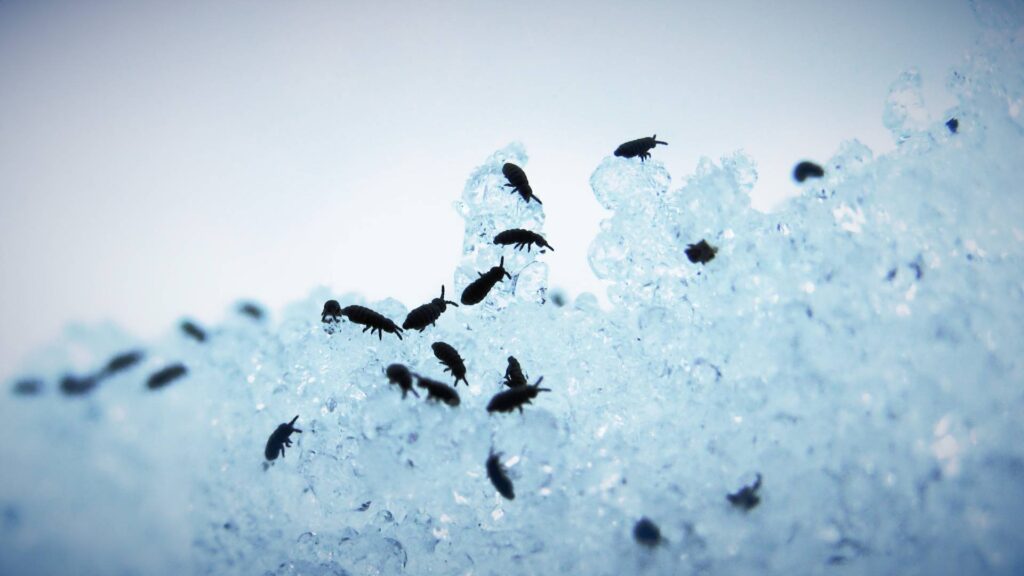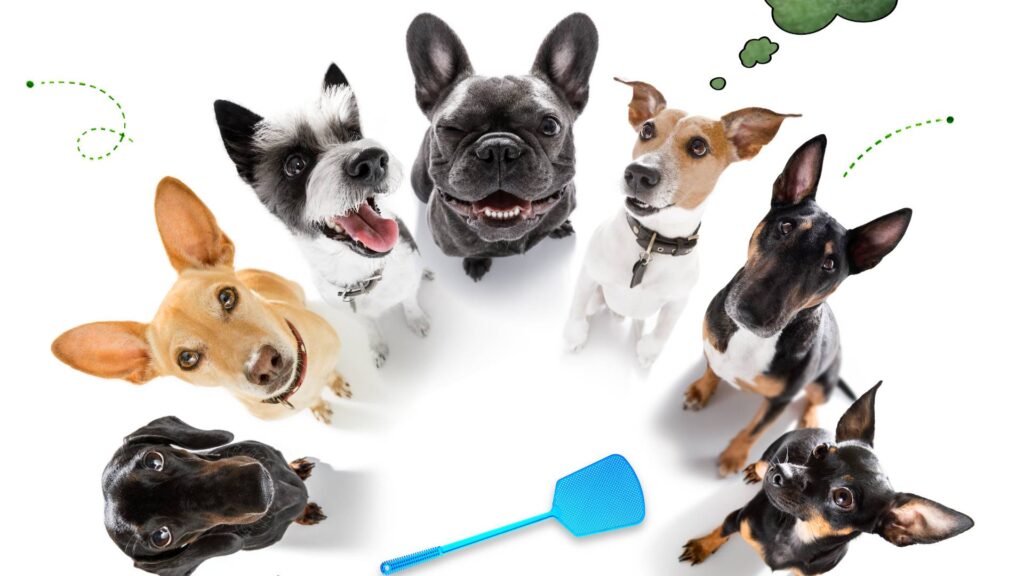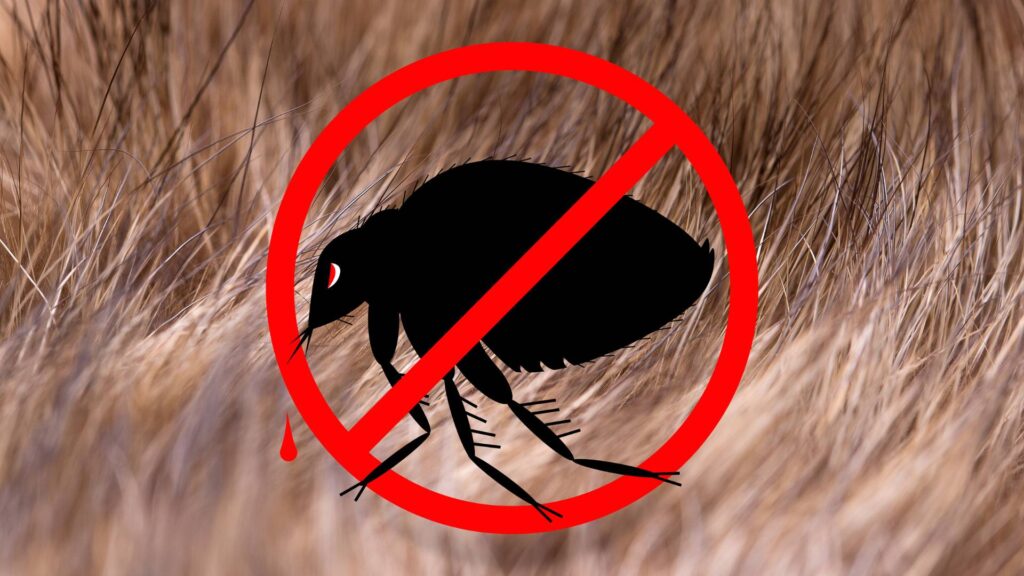As a pest control expert with years of experience, I understand the frustration and discomfort that flea infestations can cause.
Fleas are not only a nuisance for your pets but can also become a significant problem in your home. This guide will provide you with effective strategies to rid your house of fleas swiftly and prevent their return.
Understanding Flea Infestation in Your Home
The Flea Life Cycle
Understanding the flea life cycle is crucial for successful flea control. These blood-sucking pests go through four distinct stages:
- Eggs: Adult fleas lay tiny white eggs on your pet’s fur, carpets, or bedding. These eggs can fall off your pet and spread throughout your house.
- Larvae: Eggs hatch into worm-like larvae that feed on organic debris like dead skin flakes. They are light-sensitive and often burrow deep in carpets or upholstery.
- Pupae: After feeding, larvae spin cocoons and pupate. This stage can last for weeks, making fleas resilient to treatment.
- Adult Fleas: Once emerged, adult fleas seek a host for their next blood meal. They can jump long distances and quickly infest your entire house.
Knowing this cycle allows you to target all stages of flea development, ensuring a complete eradication.
Identifying Flea Infestation Signs
Several telltale signs indicate a flea infestation in your home:
- Flea bites: These appear as small, red bumps, often concentrated on the ankles, legs, and arms of humans and around the tail base and belly of pets. Bites can be itchy and uncomfortable.
- Pet scratching: Excessive scratching, biting, and licking by your pet can signal flea irritation.
- Presence of fleas: You might actually spot small, brown fleas jumping on your pet or furniture.
- Flea dirt: Black or brown specks (flea feces) on your pet’s fur or bedding are a sure sign of fleas.
Effective Flea Treatment Options

Discovering the most effective flea removal methods can be a game-changer in your battle against these pests.
Chemical vs. Natural Flea Remedies
There are two main approaches to flea treatment:
Chemical Treatments
- Flea Sprays and Foggers: These products kill adult fleas quickly but may not be effective against eggs and larvae.
- Systemic Treatments: These oral medications or topical treatments kill adult fleas and prevent flea eggs from hatching for several months. Pros: Fast-acting and efficient. Cons: Harsh chemicals can be harmful to pets and children.
Natural Flea Remedies
- Diatomaceous Earth: This powder dehydrates and kills fleas and larvae.
- Bathing with Oatmeal Shampoo: Soothes your pet’s irritated skin and may deter fleas.
- Essential Oils: Certain oils like cedarwood and lavender may repel fleas (consult a vet before using on pets). Pros: Safer for pets and children. Cons: Less potent than chemical treatments, may require more frequent application.
Choose the approach that best suits your needs. Consider consulting your veterinarian for recommendations on pet treatments.
Flea Treatment for Pets
Treating your pets is essential to break the flea life cycle. Here’s what you need to know:
- Importance: Pets are the primary hosts for adult fleas, so treating them is crucial for eliminating the infestation.
- Recommended Products: Talk to your vet about the best flea medication for your dog or cat. Popular options include spot treatments, chewable tablets, and prescription medications.
Looking for a pest-free home? Reach out to our experts today!
How to Get Rid of Fleas in Your House

Now that your pets are covered, let’s tackle the flea situation in your home. Vacuuming, washing bedding, and regular cleaning are essential steps. However, finding the best way to treat your house for fleas is essential for long-term relief and comfort. Flea sprays can be effective but use them strategically, focusing on areas where fleas thrive and repeating treatment as necessary.
Home Cleaning Strategies
- Vacuuming: This is your primary weapon against fleas and their eggs. Vacuum carpets, furniture, and pet bedding thoroughly, paying close attention to crevices and corners. Dispose of the vacuum bag immediately after cleaning.
- Washing Bedding: Wash all pet bedding, blankets, and throws in hot water (at least 140°F) to kill fleas and eggs.
- Regular Cleaning: Maintain a clean environment by vacuuming regularly, wiping down surfaces, and mopping floors. This helps prevent flea eggs and larvae from developing.
Targeted Flea Removal Techniques
Flea sprays can be effective, but use them strategically:
- Follow Instructions: Carefully read and follow the product label for proper application and safety precautions.
- Target Flea Hotspots: Focus on areas where fleas are most likely to thrive, such as carpets, upholstery, pet bedding, and baseboards.
- Repeat Treatment: Fleas have a complex life cycle, so repeat treatments at regular intervals (as recommended by the product) to ensure you break the cycle.
Choose the best pest control frequency. Get expert guidance.
Flea Prevention and Control Measures

Once you’ve eliminated the current infestation, don’t let your guard down:
Flea Prevention for the Long Term
Here are some strategies to keep those pesky fleas away from your home and pets:
- Flea Prevention Products: Consider using year-round flea prevention medications for your pets. These come in chewable tablets, topical treatments, or collars and offer continuous protection against adult fleas and sometimes flea eggs. Consult your veterinarian to choose the right product for your pet’s age and health.
- Regular Vacuuming: Maintain a consistent vacuuming routine, especially in high-traffic areas and pet-frequented spots. This helps remove flea eggs and prevent larvae development.
- Wash Pet Bedding Regularly: Include pet bedding in your regular laundry routine. Wash them in hot water to kill any lingering fleas or eggs.
- Treat Your Yard: Fleas can thrive in your yard and hitch a ride on pets or humans entering your home. Consider using yard treatments like insect growth regulators (IGRs) to disrupt the flea life cycle outdoors. Opt for natural options like diatomaceous earth or consult a pest control professional for safe and effective yard treatment solutions.
Secure your home with the right pest control plan. Find out how.
Flea Control in Your Yard
Your yard can be a breeding ground for fleas. Here’s how to manage them:
- Yard Maintenance: Keep your yard clear of debris like leaves and overgrown grass, where fleas like to hide.
- Natural Remedies: Sprinkle diatomaceous earth around the perimeter of your house and shaded areas in your yard. This powder dehydrates and kills fleas. However, reapplication might be needed after rain or heavy watering.
- Professional Yard Treatment: Consider professional pest control services specializing in flea control for your yard. They can use targeted treatments and ensure a more thorough elimination of outdoor flea populations.
Concluding Thoughts on Flea Solutions

In my experience as a pest control expert, the key to a flea-free home is consistent prevention and immediate action at the first sign of an infestation.
By understanding the flea life cycle, using effective treatments, and maintaining a clean environment, you can achieve lasting results against fleas.
Remember, the battle against fleas is ongoing, and staying vigilant is crucial to keeping your home comfortable and pest-free.
Frequently Asked Questions About Flea Solution for House
How do I get rid of fleas in my house fast?
To get rid of fleas in your house fast, you should use a combination of vacuuming, washing bedding and fabrics in hot water, and applying chemical treatments like sprays or foggers that target fleas at all life stages. Quick action and thorough cleaning are essential for immediate results.
What is the best thing to kill fleas indoors?
The best thing to kill fleas indoors is a multi-pronged approach that includes using insecticides in the form of sprays or powders, vacuuming regularly to remove fleas, eggs, and larvae, and washing bedding and pet areas frequently.
Explore your pest control options for a safer home today.
What is the best flea treatment for your home?
The best flea treatment for your home involves integrating chemical treatments, such as sprays or foggers, with natural remedies like diatomaceous earth and essential oils, along with regular cleaning and vacuuming, to effectively eliminate fleas and prevent future infestations.



